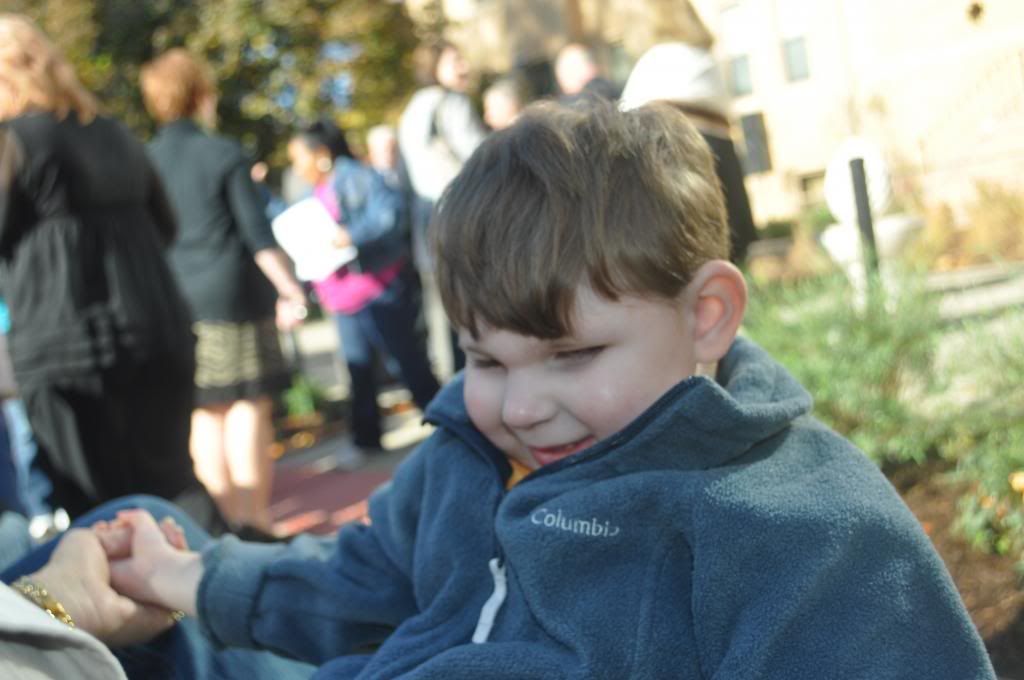Do you get frustrated by your child's stimming and negative behaviors? I read this article and found it really helpful. Helping Kids Stay Calm and Focused for Learning
Tom has some behaviors that we are trying to reduce. When he is bored or frustrated he will hit himself in the head; not the type of behavior that is acceptable in society and nothing we want to see continue.
Below you see Tom at a crowded event. Can you image how loud and unnerving that would be if you were a small child and could not see? It makes me recognise how much trust Tom has in us.
 |
| When Tom is comfortable and engaged he is more ready to participate and interact. |
For example, Tom hates to be buckled into a carseat and the ride to school is 20-30 minutes long depending on traffic. He spends his time strugging against the straps of his carseat and then he sometimes hits himself when he gets frustrated. I can hardly pull over in the middle of traffic and hold his hands down. I have to keep driving and stay calm.
I turn off his music and say, "We don't hit. No music if you hit. Do you want me to turn on the music again?" He calms down as soon as the music stops and says, "Yes," so I will turn his music back on. Then we continue on our merry way. Sometimes I have to turn the music off twice per trip but I think it works better than me yelling, which usually only makes things worse.
The article stresses that we focus on what is going on around the child. In this case, he was both confined and bored in his carseat. The body craves stimulation and since Tom doesn't get visual stimulation he must seek it out in other ways. He is usually in constant motion so being tied down in a carset is just awful for him. I keep a bunch of small hand-held toys in the car for him and we play his music. I'm going to be on the look out for more hand-held toys and fidget items for the car. I think ours are getting stale.
The benefit of the approach described in this article is that children begin to learn to self-regulate. And helping Tom learn to help himself is a skill worth exploring.
An idea for the car: a talking gps. At a recent conference I attended I learned about integrating gps into everyday life. In the car or walking in public places it will provide incidental information about the space you are traveling through - info like street names, cardinal directions, and local landmarks/stores. After a while the child/student will begin to inquire about these important concepts.
ReplyDeleteThat is a really good idea! Thanks for sharing.
DeleteIt's very nice to have a mobility specialist here to offer advice:)